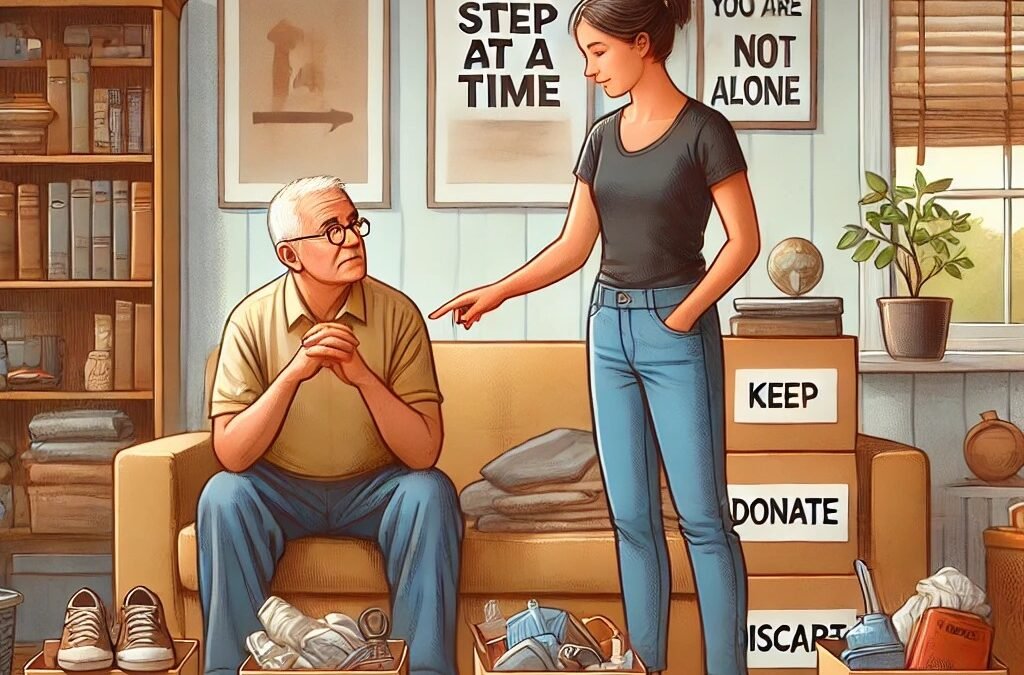Hoarding disorder can be a challenging and complex issue for those affected and their loved ones. People who struggle with hoarding often face anxiety, shame, and difficulty parting with their possessions. However, with the right approach, it’s possible to support someone in taking steps toward a healthier and clutter-free life. In this guide, we’ll explore how to help a hoarder in a way that is compassionate, respectful, and effective.
Understanding Hoarding Disorder
Before jumping into how to help, it’s crucial to understand what hoarding disorder is. Hoarding is more than just keeping too many things. It involves a persistent difficulty in discarding or parting with possessions, regardless of their actual value. This behavior often leads to a significant accumulation of items, creating cluttered living spaces and potentially hazardous conditions. Hoarding can stem from various factors, including emotional trauma, anxiety, or a fear of losing valuable memories associated with the objects.
How to Help a Hoarder: First Steps
If you know someone struggling with hoarding, it’s important to approach the situation with empathy and patience. Here are seven practical ways to assist them:
Listen Without Judgment
The first step in helping a hoarder is to listen and show empathy. Hoarders often feel shame and embarrassment about their situation, which can make them defensive. When you approach the topic, do so with care. Let them know that you are there to support, not criticize. This open and non-judgmental conversation can help them feel more comfortable discussing their struggles and considering change.
Educate Yourself About Hoarding
Knowledge is power. To be an effective support system, take time to learn about hoarding disorder. Understanding the psychological aspects of hoarding can help you approach the situation with a more informed mindset. You’ll be better equipped to provide the right kind of support and recognize the symptoms of hoarding, including anxiety and emotional attachment to possessions.
Encourage Professional Help
Hoarding disorder often requires professional intervention. Encourage the person to seek help from a therapist or counselor experienced in cognitive-behavioral therapy (CBT), which is commonly used to treat hoarding. You might suggest accompanying them to an appointment or helping them research local mental health professionals who specialize in this area. Professional support can be a critical component in managing the emotional and behavioral aspects of hoarding.
When assisting a hoarder, it’s crucial to start small. Suggest beginning with a manageable area, such as a single drawer or shelf. Helping a hoarder tackle smaller tasks first can prevent them from feeling overwhelmed and build their confidence. As they achieve these smaller goals, they’ll likely feel more motivated to continue working on other areas.
One of the most common mistakes when helping a hoarder is attempting to force them into a large-scale cleanout. While it might be tempting to throw everything out, this approach can backfire, causing distress and worsening the hoarding behavior. Respect their attachment to their belongings, and avoid taking control of the situation. Focus on collaboration, discussing which items they feel ready to part with, and which they still need.
Create a Clutter-Free Plan
Working together to develop a clutter-free plan can give the person a sense of control and direction. This plan should outline small steps to organize and declutter, including sorting items into categories (keep, donate, throw away). Set a timeline that aligns with their comfort level, allowing for breaks and emotional processing. Breaking the process into manageable tasks makes the idea of decluttering less daunting.
Additional Considerations for Helping a Hoarder
Supporting a hoarder can be emotionally taxing, so it’s essential to look after your well-being, too. Seek support from others who have had similar experiences, or consider speaking with a therapist for guidance on how to cope with the situation.
It’s also vital to recognize that hoarding is often linked to deeper emotional issues. Avoid getting frustrated if progress is slow, and be prepared for resistance. The journey to a clutter-free life is not linear, and relapse is common. By approaching the situation with compassion, patience, and understanding, you can make a meaningful difference in their life.
Helping a hoarder requires empathy, patience, and a thoughtful approach. By understanding their struggles, offering gentle support, and encouraging professional help, you can assist them on the path toward a safer, more organized living environment. Progress may be slow, but with compassion and steady encouragement, positive change is possible.

